Por: Riccardo Marchesi 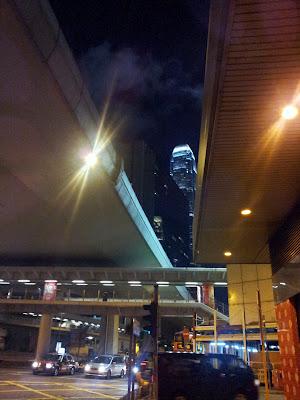
(To read English version go at the bottom of the article)
Aún recuerdo la extraña sensación que tuve el día que llegue a este lugar donde no sólo la tierra tiene valor pero incluso el cielo lo tiene. Con una superficie de unos 1.104 km2 (de los cuales la mayoría son zonas montañosas o islas rocosas) y una población de más de 7 millones de habitantes, no es para sorprenderse la necesidad del uso eficaz del espacio. Durante muchos años, Hong Kong ha creado y recreado su propia trama urbana encontrando una singular manera de resolver el siempre presente problema de la gestión del espacio: proponiendo la solución en tres dimensiones, ocupar el aire. Una ciudad que crece a partir de varios niveles bajo tierra fue creada, donde sólo el cielo es el límite. Esto generó un nuevo sistema de edificios multifuncionales, donde se puede encontrar absolutamente de todo, desde transporte, centros comerciales y viviendas dentro de la misma estructura. 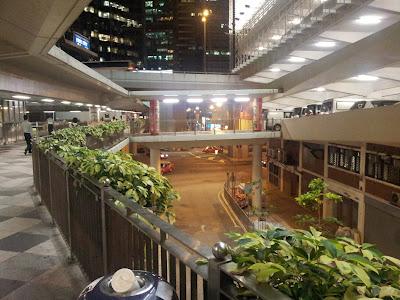
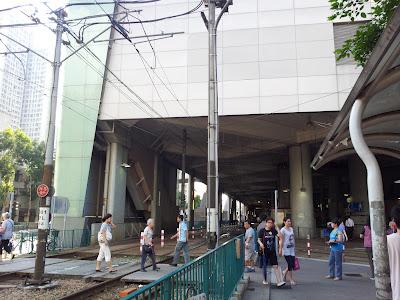 El precio a pagar por este tipo de desarrollo es la distancia todos los días viajar desde las zonas residenciales periféricas a las zonas comerciales centralizadas. Esto ha creado nuevos flujos de transporte para personas y vehículos. ¿Cómo pueden 7 millones recorrer la ciudad a través de vías que se vuelven más y más estrechas? Bueno, hay una sola manera: la maximización del uso de estas vías mediante la construcción de carreteras y pasos elevados en todos los niveles posibles para movilizar a personas y vehículos en el aire, y el desarrollo de una extensa red de metro subterráneo para conectar todas las áreas dispersas y las islas.
El precio a pagar por este tipo de desarrollo es la distancia todos los días viajar desde las zonas residenciales periféricas a las zonas comerciales centralizadas. Esto ha creado nuevos flujos de transporte para personas y vehículos. ¿Cómo pueden 7 millones recorrer la ciudad a través de vías que se vuelven más y más estrechas? Bueno, hay una sola manera: la maximización del uso de estas vías mediante la construcción de carreteras y pasos elevados en todos los niveles posibles para movilizar a personas y vehículos en el aire, y el desarrollo de una extensa red de metro subterráneo para conectar todas las áreas dispersas y las islas. 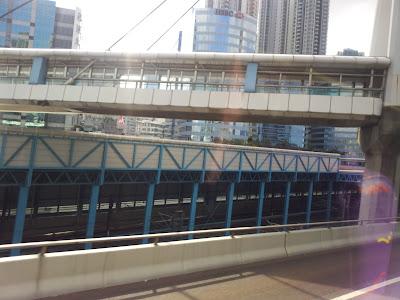
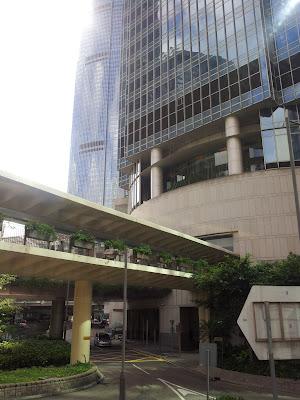 Este uso excesivo del espacio ha creado una perspectiva extraña, donde la ciudad ha perdido su cielo. Los edificios con más de 100 pisos, pasarelas, pasos elevados y subterráneos que recorren como telas de araña se han apilado uno sobre otro hasta el cielo dejando a los ciudadanos de Hong Kong viviendo bajo las sombras.
Este uso excesivo del espacio ha creado una perspectiva extraña, donde la ciudad ha perdido su cielo. Los edificios con más de 100 pisos, pasarelas, pasos elevados y subterráneos que recorren como telas de araña se han apilado uno sobre otro hasta el cielo dejando a los ciudadanos de Hong Kong viviendo bajo las sombras. 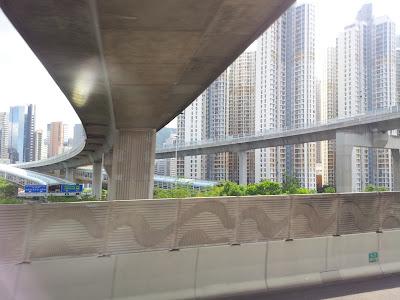
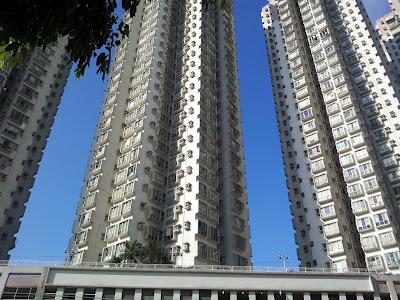 ¿Quién podría imaginar lo divertido que encuentro el buscar cuán precioso es el cielo azul y el sol entre dos edificios? Para reflexionar. ¡Que tengáis un Feliz Viernes y un excelente fin de semana! (English version) I still remember the bizarre feeling on the first day I arrived to where not only the land but even the sky has high value. With an area of about 1104 km2 (of which most are mountain areas or rocky islands) and a population of over 7 million, it’s not surprising about the need for effective use of space. For many years, Hong Kong has created and recreated his own unique urban fabric finding a way to solve the ever present problem of space management: proposing the solution proposed in three dimensions, occupy the air. A city that grows from several floors underground was created, where only the sky was the limit. This generated a new system of multifunctional buildings, where you could find absolutely everything from transportation, shopping and housing within the same structure. The price for this kind of development is the distanced daily traveling from the outlying residential districts to the centralized commercial areas. This has created a new influx of transportation for both people and vehicles. How can 7 million people flush through such narrow and even one-way roads? Well, only one way: maximizing the use of these roads by building highways and flyovers at all possible levels to mobilize people and vehicles in the air, and developing an extensive subway network underground to connect all scattered areas and islands. This excessive use of space has created a strange perspective where the city has lost its sky! Buildings with more than 100 floors, footbridges, flyovers and subway that run like spider-webs and stacking over each other up to the sky make Hong Kong citizens live under shadows. Who would even imagine how precious the blue sky and sunshine are to me now and how funny it is for me to look for the sky in the gap between two buildings? Something to think about it. Have a great Friday and a wonderful weekend!
¿Quién podría imaginar lo divertido que encuentro el buscar cuán precioso es el cielo azul y el sol entre dos edificios? Para reflexionar. ¡Que tengáis un Feliz Viernes y un excelente fin de semana! (English version) I still remember the bizarre feeling on the first day I arrived to where not only the land but even the sky has high value. With an area of about 1104 km2 (of which most are mountain areas or rocky islands) and a population of over 7 million, it’s not surprising about the need for effective use of space. For many years, Hong Kong has created and recreated his own unique urban fabric finding a way to solve the ever present problem of space management: proposing the solution proposed in three dimensions, occupy the air. A city that grows from several floors underground was created, where only the sky was the limit. This generated a new system of multifunctional buildings, where you could find absolutely everything from transportation, shopping and housing within the same structure. The price for this kind of development is the distanced daily traveling from the outlying residential districts to the centralized commercial areas. This has created a new influx of transportation for both people and vehicles. How can 7 million people flush through such narrow and even one-way roads? Well, only one way: maximizing the use of these roads by building highways and flyovers at all possible levels to mobilize people and vehicles in the air, and developing an extensive subway network underground to connect all scattered areas and islands. This excessive use of space has created a strange perspective where the city has lost its sky! Buildings with more than 100 floors, footbridges, flyovers and subway that run like spider-webs and stacking over each other up to the sky make Hong Kong citizens live under shadows. Who would even imagine how precious the blue sky and sunshine are to me now and how funny it is for me to look for the sky in the gap between two buildings? Something to think about it. Have a great Friday and a wonderful weekend!
